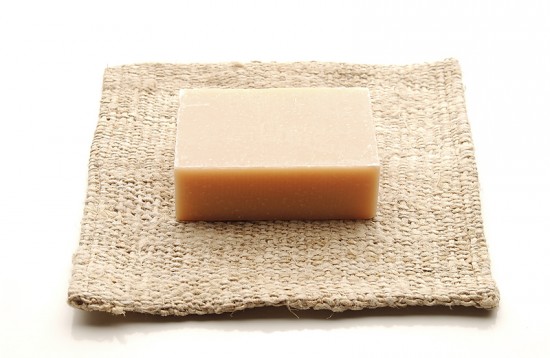
There are several different methods that you can use to make homemade soap. Some of fairly easy and others are more complex. However each method will give you a lovely finished product that you can enjoy yourself or give to someone else for a wonderful gift.
Here is a brief overview of methods for making homemade soap:
Melt and Pour-With this method you will melt blocks of pre-made soap and add your own fragrance. Making soap with a “melt and pour” base has been likened to making a cake with a cake mix. What you will lose in control of your ingredients and customization of your recipe, you make up for in safety, ease and convenience. When using this method you buy pre-made blocks of uncolored, unscented soap “base” from a craft store or soap supplier. You will then melt the soap base in the microwave or a double boiler. When the soap is fully melted, you simply add your fragrance, color and/or additives. Pour the soap in a mold, and you are done. The soap is then ready to use as soon as it hardens.
To get you started making soap with this method you will need:
- A counter top or other clean workspace with a microwave or double boiler
- A heat resistant bowl for the microwave
- A couple of spoons or whisks
- Some melt and pour soap base
- A set of measuring spoons
- Fragrance, color, or additives, as desired
- Something to mold the soap in
The pros of making soap with the melt and pour method include:
- This is an easy and inexpensive way to start making soap
- There is no need to deal with a dangerous lye mixture
- You do not need a lot of ingredients to start
- Your soap will be ready to use as soon as it hardens
The cons of making soap with the melt and pour method include:
- You have no control over your ingredients
- Melt and Pour will not be quite as “natural” as other methods. (Many manufacturers add chemicals to increase lather or to better allow the soap to melt.)
- Your soap is only as good as the base you purchase
Cold process (the most common method)-this is way to make soap from scratch with oils and lye. “Cold process” soap making is like making your cake from scratch. You will control everything that goes into the pot, and you can make it as “natural” as you want. However, you should understand that your setup is a little more complicated, and you will need to learn a few techniques of the craft first. To make cold process soap, first heat the oils in your soap pot until they are approximately 100 degrees. Then you will slowly add the lye-water mixture and blend the soap until it thickens to “trace”. After the mixture reaches trace, you add your fragrance, color and additives and pour it into the mold. The raw soap will then take about 24 hours to harden, and about four weeks to cure before it is ready to use.
To get started making cold process soap, you will need:
- A flat, uncluttered workspace with a heat source and access to water
- Some animal fats or vegetable oils
- A pitcher of lye-water
- A soap pot and some other easily found tools and equipment
- Fragrance or essential oil, as desired
- Natural or synthetic colorant, as desired
- A mold to pour the raw soap into
- A cool, dry place to let the soap cure
The pros of making cold process soap include:
- Your soap will be truly made from scratch
- You can control all of the ingredients in the soap
- You can tailor your recipe into almost unlimited variations
The cons of making cold process soap can include:
- You will need to learn how to safely work with lye
- You will need considerably more ingredients and tools to start
- It takes much longer to make and there is more cleanup involved
- You will need to wait several weeks before your soap is ready to use
Melt and pour and cold process soap-making are the two most popular methods for making soap. However you can also use the following methods as well. These include:
- Hot Process-This is a variation of cold process where the soap is actually cooked
- Re-batching-This is a method that uses the grinding up bars of soap, adding milk or water, and re-blending them
Whatever method you choose, you can make great soap. Just be sure to work patiently, and follow the instructions closely to start with. Once you are thoroughly familiar with the basic steps, you will be able to let your creative inspirations flow and make all sorts of wonderful soap creations.

Leave a Reply